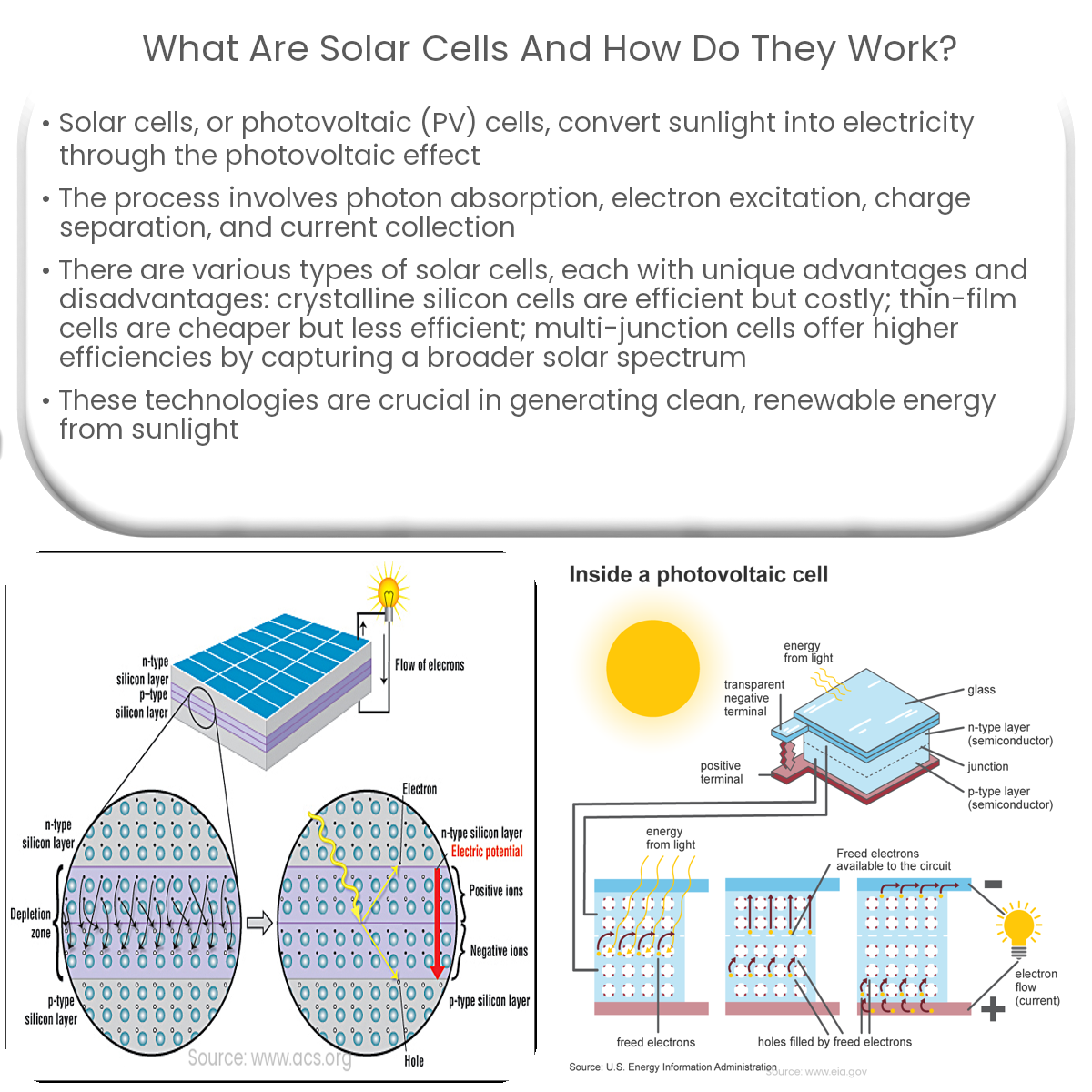Solar cells, or photovoltaic cells, convert sunlight into electricity by absorbing photons and creating an electric current through the photovoltaic effect.
Understanding Solar Cells and Their Functioning
Solar cells, also known as photovoltaic (PV) cells, are devices that convert sunlight into electricity. This article will explain the basic principles of solar cells and how they work to harness the power of the sun.
What are Solar Cells?
Solar cells are the building blocks of solar panels, which are widely used to generate clean, renewable energy. They are made from semiconductor materials, such as silicon, that can absorb photons from sunlight and generate electric current through a process called the photovoltaic effect.
How Do Solar Cells Work?
The functioning of solar cells can be explained in a few key steps:
- Photon absorption: When sunlight strikes the solar cell, photons from the sunlight are absorbed by the semiconductor material, transferring their energy to the material’s electrons.
- Electron excitation: The absorbed energy causes some electrons to break free from their atomic bonds, creating electron-hole pairs. The freed electrons are now available to conduct electric current.
- Charge separation: The solar cell’s internal electric field, created by doping the semiconductor material with specific impurities, separates the freed electrons from the holes. This separation prevents the electrons from recombining with the holes and maintains a steady flow of electric current.
- Current collection: Conductive metal contacts on the solar cell’s surface collect the separated electrons, creating a flow of electric current. This current, combined with the cell’s voltage, generates usable power.
Types of Solar Cells
There are several types of solar cells, each with its advantages and disadvantages:
- Crystalline silicon solar cells: The most common type of solar cell, made from either monocrystalline or polycrystalline silicon. These cells offer high efficiency and longevity but are relatively expensive to produce.
- Thin-film solar cells: These cells use thin layers of semiconductor material, such as amorphous silicon, cadmium telluride (CdTe), or copper indium gallium selenide (CIGS). Thin-film solar cells are cheaper to produce but generally have lower efficiency than crystalline silicon cells.
- Multi-junction solar cells: These cells use multiple layers of different semiconductor materials to capture a broader range of the solar spectrum, resulting in higher efficiencies. Multi-junction cells are primarily used in space applications and high-end solar panels.
Conclusion
Solar cells are essential components in the generation of clean, renewable energy from sunlight. They function by absorbing photons from sunlight and using the photovoltaic effect to create electric current. Different types of solar cells, such as crystalline silicon, thin-film, and multi-junction cells, offer various advantages and trade-offs in terms of efficiency, cost, and application suitability.


